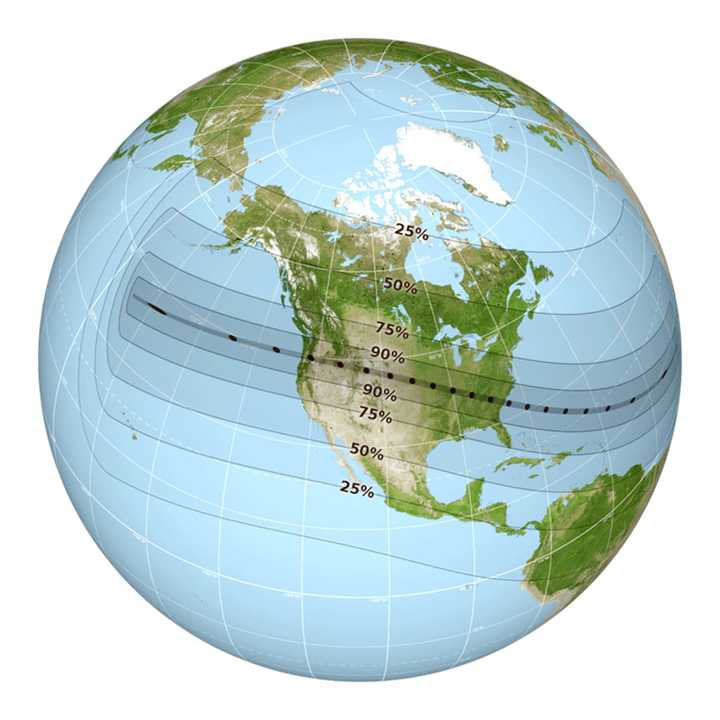Well, considering wearing protective eyewear to view the eclipse is a must, you may think you're out of luck.
Actually though, you do have a couple of options.
First, TV and the Internet. The eclipse will be broadcast and streamed live on numerous outets.
Second, there's a trick you can do.
Turn your back to the sun and moon, raise your mobile phone in selfie position and watch the eclipse through your phone. You can even snap some photos. But there are also important safety tips if you go the selfie route you can read by clicking here. Experts also warn aiming the lens of the phone at the sun for too long a period of time may damage the lens.
If those methods don't work for you, you can reach for a cereal box. NASA explains the "cereal box" method for viewing in the video here.
On Monday, Aug. 21, everyone in the continental United States, in fact, everyone in North America -- plus parts of South America, Africa, and Europe -- will have at least a partial solar eclipse. The thin path of totality will pass through portions of 14 states.
Weeks of anticipation have been tempered by a big variable: the weather forecast and whether the possibility of cloudy skies might prevent Hudson Valley residents from seeing it.
Now though, there is no uncertainty.
The forecast for Monday calls for sunny skies and warm temperatures, with a high in the mid- to upper-80s.
Though New York will not be one of the 14 states seeing the full total eclipse, for an animation of what you may see from your Hudson Valley location on Monday, click here.
The eclipse will be visible starting at 1:23 p.m. Monday with a partial eclipse. Peak viewing time with about 71 percent coverage expected will be around 2:44 p.m. The event will wrap up at around 3:59 p.m. with a partial eclipse.
Check out the timeline for viewing by clicking here.
The sun will disappear behind the moon, turning daylight into twilight, and leading to a quick plunge in temperature before streamers of light streaking across the sky around the moon's silhouette.
It will mark the first time a total solar eclipse will be visible from the mainland United States since 1979.
How long ago was that? Well, consider this. Jimmy Carter was president and 63 Americans were taken as hostages in Iran shortly after Ayatollah Ruhollah Khomeini returned to Tehran after nearly 15 years of exile.
"A total eclipse of the sun belongs on everyone's bucket list," said Hudson Valley resident and renowned astronomer and science communicator Neil deGrasse Tyson of North Salem.
The eclipse will also be the first to sweep across the entire country since 1918.
Given all that, excitement is building. You can check out a website devoted just to the eclipse -- eclipse2017org -- by clicking here.
After Monday, the next total solar eclipse is due for April 2024.
Share this story on Facebook by clicking on the Facebook icon below.
Click here to follow Daily Voice Hyde Park and receive free news updates.



